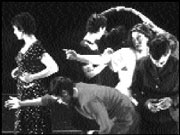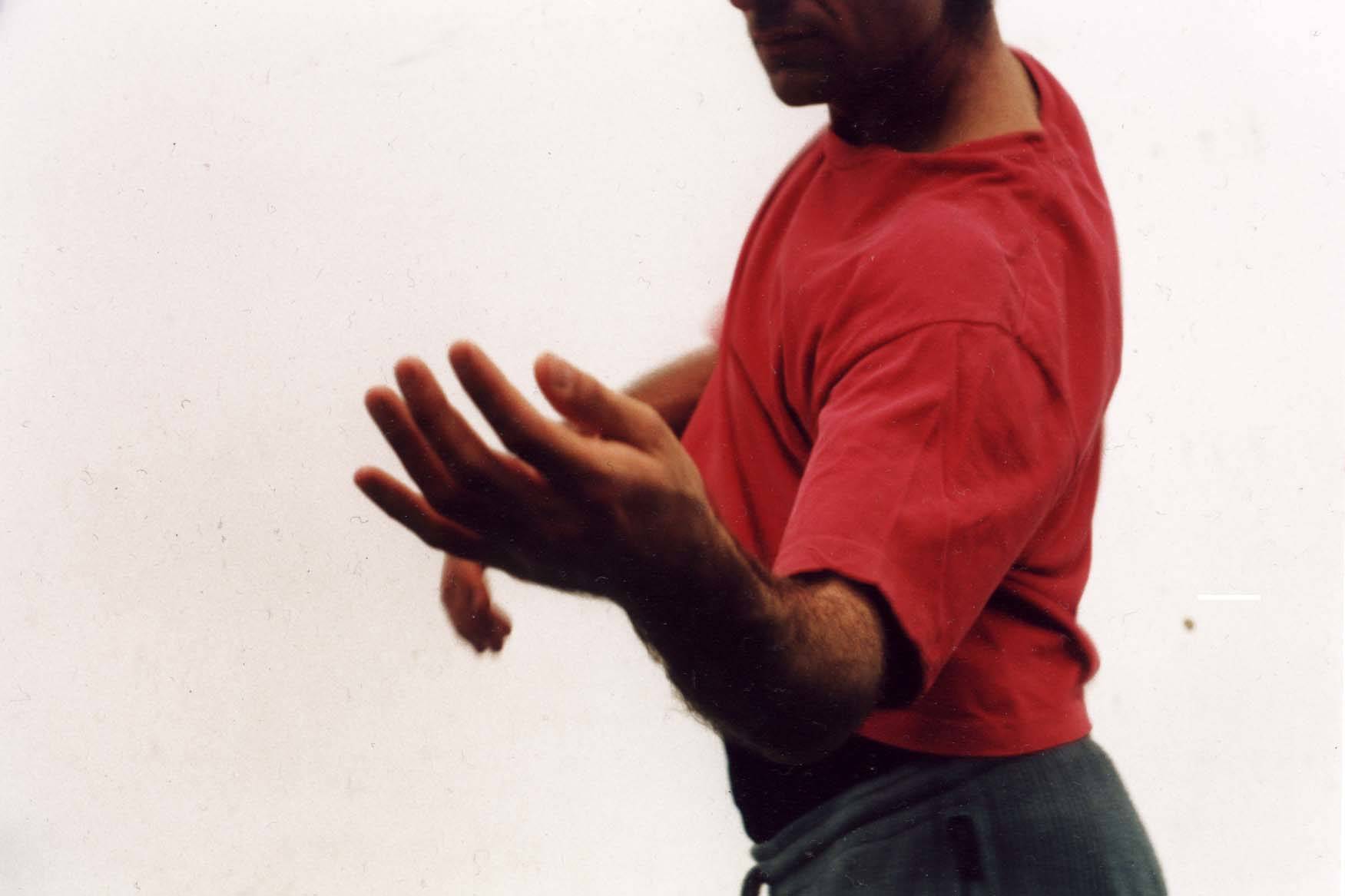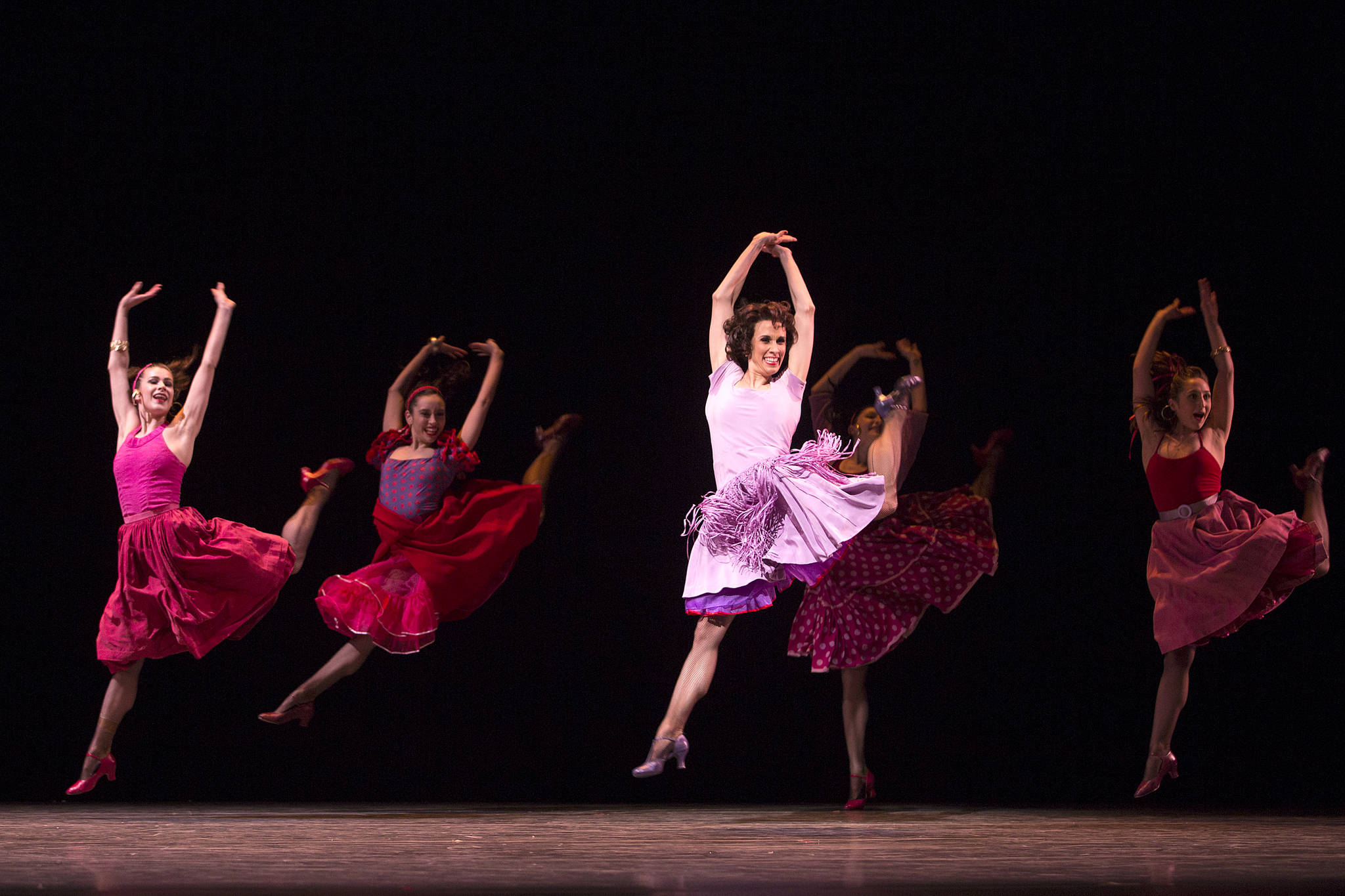LOVE OF THE NEW GUN
Freehold Theater/East Hall 1525 10th, second floor, 914-4161 $12 adv. / $14 at door 8 p.m. Fri.-Sun., Jan. 25-Feb. 3
EVEN AT ITS MOST stable moments, dance is anything but still, and so a dance based on the work of a visual artist needs to translate something about those static images into motion. In Love of the New Gun, which incorporates the work of abstract expressionist painter Arshile Gorky, choreographer Sheri Cohen doesn’t narrate the artist’s volatile life or animate one of his paintings; she does something subtler and more oblique with her subject matter, so that we see Gorky “moving” in the stage setting and costume choices as well as the dancers’ actions.
One of the most obvious, and successful, references to the painterly sources of the dance is the stage setting itself. With chrome yellow drops on one side and bright red flats on the other leading up to a deep purple backdrop, the East Hall space has seldom looked so vivid. Cohen has borrowed from Gorky’s palette without trying to re-create a specific image.
In extensive program notes, Cohen encourages the audience to think of the space as an art gallery, to linger there, look at the set from a different perspective, and watch the dancers, who, as the audience arrives, are already performing what will become signature movement phrases. Abrupt changes of direction and short bursts of running or spasmodic leaps alternate with longer, more contemplative sequences of hand gestures, seemingly without meaning but performed with great intensity. For once, the fact that the audience enters the hall by walking right through the performing area manages to support the effect of the dance.
As we stand or wander, the performers sometimes approach and whisper in our ears. “I’ve been told a lot of lies in my life . . . ” is the phrase I hear first, and the dancer goes on to explain that she’s not disconcerted by the difference between truth and falsehood anymore. It feels like I’ve been caught eavesdropping at the museum. Eventually, as the audience sorts itself out from the performers and fills the seats, the dancers extend the reach of their movement, covering the width or depth of the stage in expanded versions of their earlier material. Finally the ensemble comes together in a group, and as the lights and sound change, we seem to begin the dance proper.
A long sequence of heads raising and lowering, looking up and then down while fingers delicately trace along sides and bellies, gives us plenty of time to examine individual dancers, reinforcing the gallery impression from earlier. Andrew Drury’s percussion score sounds like water drumming on a shower stall or a sudden rainstorm—as it thins out and softens, most of the dancers leave the space one by one. Emily Stone remains, making herself into a solo figure by taking herself out of the group. Through the rest of the dance, she will hover on the sidelines, occasionally making contact with the others, but mostly watching, as if trying to gauge the safety of the world she sees. The precision of her gestures seems to echo the delicacy of Gorky’s drawing—without retracing his shapes she reflects their precision, in contrast to some of the continued erratic running and turning phrases we see in the rest of the ensemble. Vanessa deWolf eventually emerges as another individual figure, darting around the group like a human bumblebee. As she approaches the others, I think she was the one who whispered in my ear before, and I wonder what other secrets she might be telling.
Although the performance energy continues to build in this section of the work, there’s little development in the structure of the movement itself. Cohen, who doesn’t perform here, is a skilled improviser and could use those powers to extend the core material. As it is, we begin to feel we have “seen” the painting and might be ready to move on. When the dancers come back to the group and the work ends, at just under an hour, they haven’t necessarily resolved anything, but they seem to be finished for now, and we are finished watching them.








